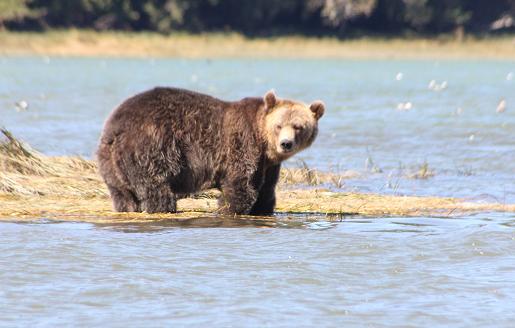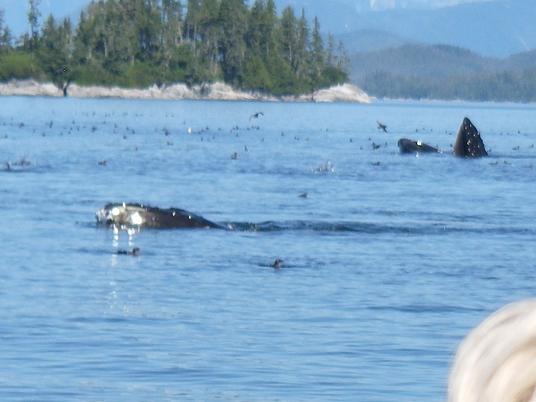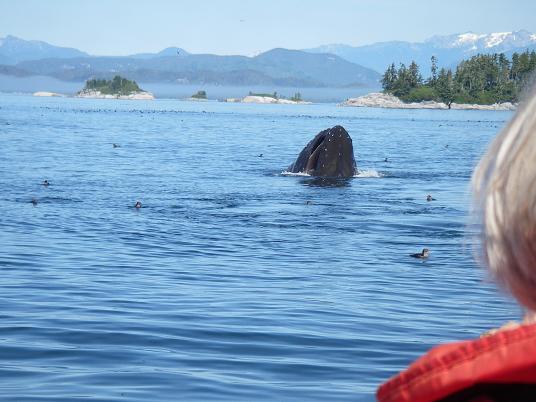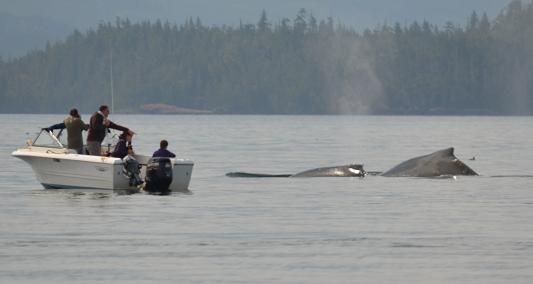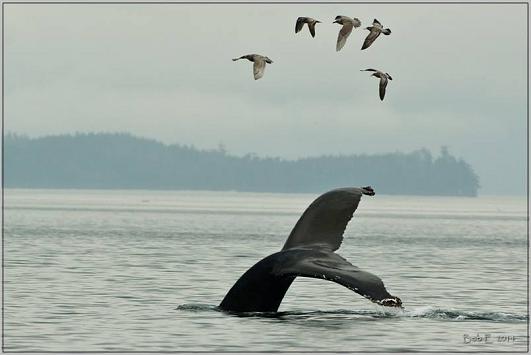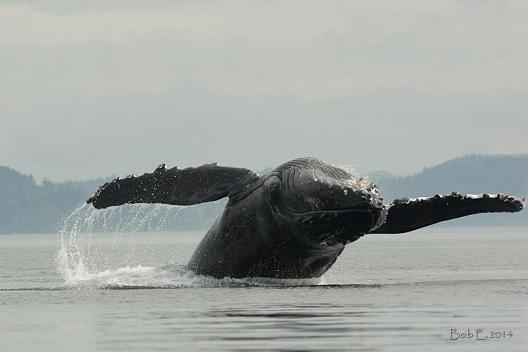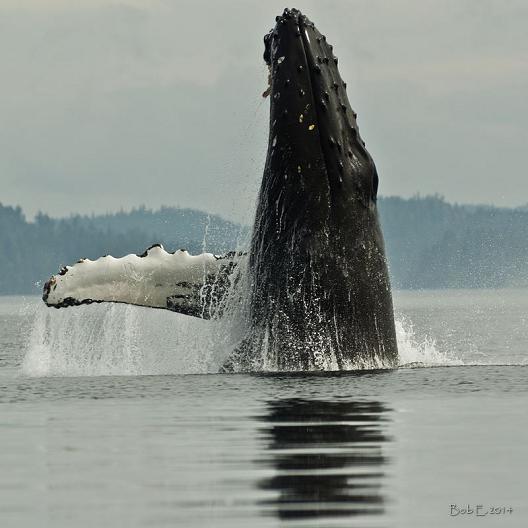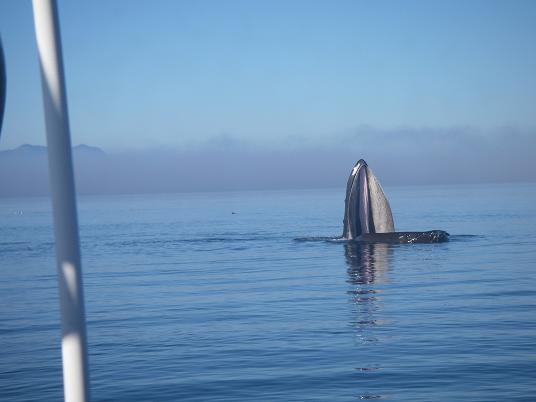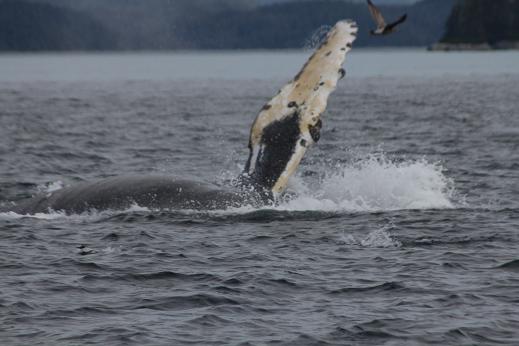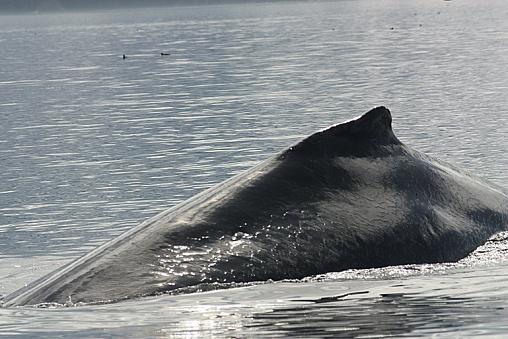
“This photo was taken as we sat in the boat with George having lunch in the Inside Passage.
I can only describe this as the most perfect setting I have ever had lunch in. Beautiful perfectly calm sea, stunning scenery and total silence, but for the sound of the Humpbacks surfacing & blowing SO close to the boat.
Yet more Humpbacks near the boat!!”
Lynn is right but the key to “great pictures” is patience. On our whale watching day we often sit and have lunch in the same areas that the humpback whales are feeding. By being still in one area (motors turned off) we pose no threat or danger and end up with some incredible memories.
